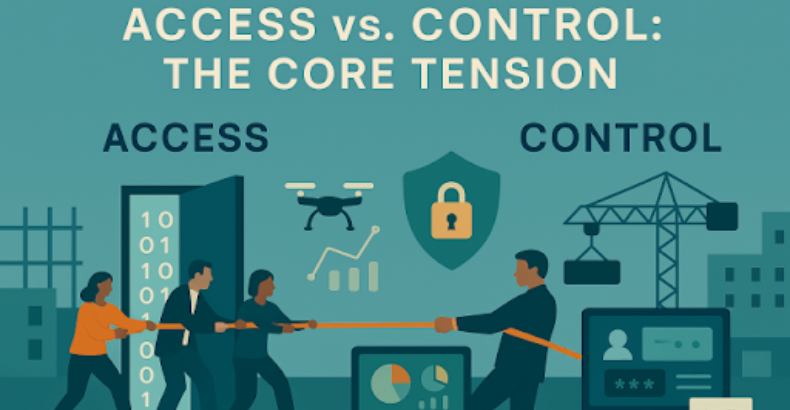
Data Governance in BI: Striking a Balance Between Access and Control
In today’s data-driven world, Business Intelligence (BI) thrives on accessibility. The more people who can access and analyze relevant data, the better decisions your organization can make. But with accessibility comes risk: uncontrolled access can lead to data breaches, compliance failures, and inconsistent reporting.
This is where Data Governance plays a critical role. The challenge? Striking the right balance between empowering users and protecting your data assets.
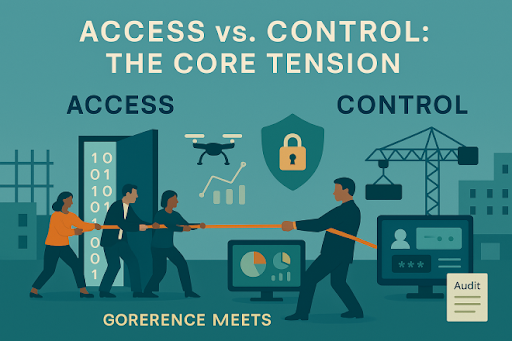
Why Data Governance Matters in BI
Data Governance is often perceived as a compliance requirement or technical discipline. But in the world of BI, it’s a business enabler. Effective governance ensures that:
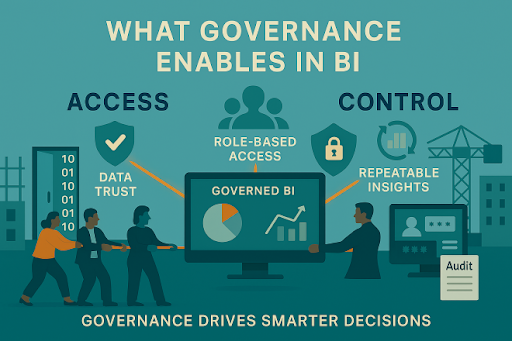
- Data is trustworthy
- Access is controlled
- Insights are consistent and repeatable
Without proper governance, self-service BI tools like Power BI, Tableau, and Looker can easily become “data chaos” tools – creating conflicting reports, security vulnerabilities, and incorrect KPIs across departments.
The Two Sides: Access vs. Control
Access: Empowering Data-Driven Culture
Modern BI platforms enable non-technical users to explore data, build reports, and make faster decisions. To promote innovation and agility, organizations must:
- Provide self-service BI capabilities
- Break down data silos
- Enable role-based access to datasets
- Encourage data literacy across teams
Control: Protecting Data Integrity and Security
On the other hand, ungoverned access can lead to:
- Data leaks or breaches
- Misuse of sensitive information (e.g., customer PII)
- Inconsistent metrics and KPIs
- Regulatory non-compliance
To maintain control, organizations need:
- Centralized data policies
- Role-based permissions
- Data masking or anonymization
- Audit trails and access monitoring
Striking the Right Balance: Best Practices
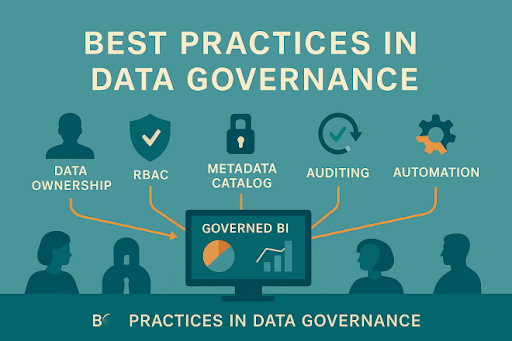
How can your organization enable wide access without sacrificing control? Here are practical strategies:
1 Define Data Ownership
Assign clear ownership for every critical dataset. Owners should approve access, ensure data quality, and manage updates.
2 Implement Role-Based Access Control (RBAC)
Control who sees what based on roles, not individuals. This reduces complexity and improves scalability.
3 Leverage Data Catalogs and Metadata
A data catalog makes data assets discoverable without exposing sensitive details. Metadata can describe data usage rules, helping users understand appropriate use.
4 Monitor and Audit Usage
Use your BI platform’s auditing features to track who accesses what data, when, and how. This supports compliance and continuous improvement.
5 Educate and Promote Data Literacy
Train employees not only on tools but also on data policies, privacy requirements, and responsible data usage.
6 Automate Governance Workflows
Modern tools like Microsoft Purview, Collibra, and Azure Data Catalog help automate classification, access approvals, and policy enforcement.
Real-World Example
Consider a global retailer:
- Challenge: Different regions were using separate BI reports for the same KPIs, leading to inconsistent numbers reported to leadership.
- Solution: Implemented centralized data governance policies using Microsoft Purview and Power BI Dataflows. Role-based access was enforced, and a shared KPI definition catalog was introduced.
- Result: Consistent reporting across regions, reduced compliance risks, and faster, trusted decision-making.
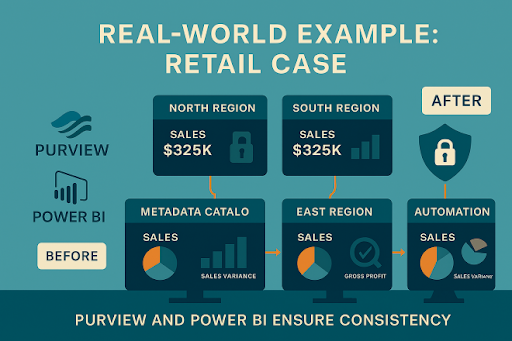
The Role of Modern BI Tools
BI platforms today offer built-in governance features:
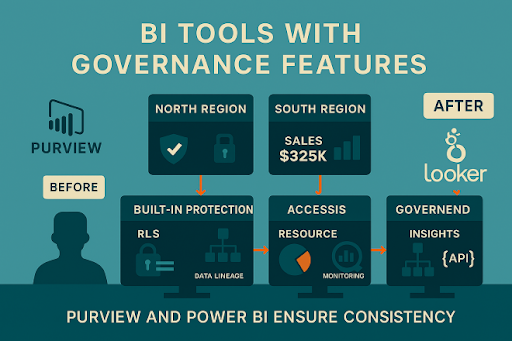
- Power BI: Row-Level Security (RLS), Sensitivity Labels, Microsoft Purview integration
- Tableau: Permissions Management, Data Lineage, Catalog integration
- Looker: Data Models, Access Control, Governance APIs
But tools alone aren’t enough – governance is a cultural and strategic initiative.
Conclusion: Governance as an Enabler, Not a Roadblock
Data Governance isn’t about saying “no” – it’s about enabling responsible data use at scale. By striking the right balance between access and control, organizations can:
- Empower teams with the data they need
- Ensure trust in reports and dashboards
- Meet compliance standards
- Protect sensitive information
In modern BI, good governance isn’t optional – it’s foundational to data-driven success.
